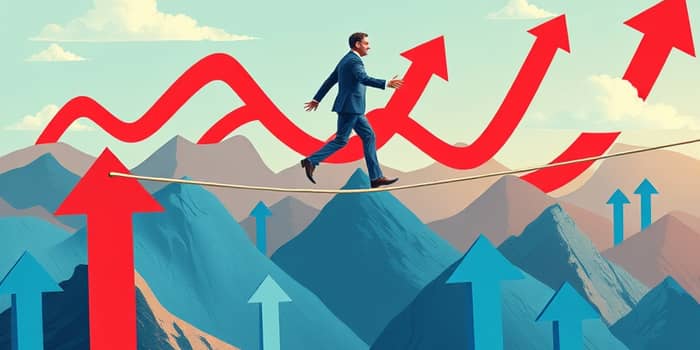
In modern economies, central banks walk a narrow path between two extremes. On one side lies inflation, eroding the value of money with rising prices. On the other, deflation threatens to suffocate growth as consumers and businesses postpone spending. Each policy decision carries profound consequences for millions of households, shaping interest rates, employment, and the overall health of the financial system.
As stewards of monetary stability, central banks must harness every tool at their disposal. The stakes are high: missteps can spark runaway inflation, stalling growth in its wake, or lock economies into a relentless downturn. This article explores how policymakers balance these opposing forces, drawing on history and theory to chart a course through uncertain waters.
Inflation is a sustained increase in the general price level of goods and services. When inflation rises, purchasing power of money declines steadily, meaning each dollar buys less than before. Moderate inflation (around 2% per year) is often viewed as a sign of a healthy, expanding economy.
Deflation, on the flip side, occurs when prices fall across the board. This might seem beneficial—after all, who does not appreciate lower costs? Yet prolonged deflation can spiral into weak demand, lower production, and rising unemployment, ultimately undermining growth and financial stability.
Understanding the root causes helps central banks anticipate and react effectively. Below are the most common drivers for inflation:
By contrast, deflation often stems from sustained drops in demand. When households and firms tighten their belts, producers lower prices in an effort to attract buyers. Similarly, excess production capacity—where supply consistently exceeds demand—drives prices down as companies clear inventories at reduced margins. Lastly, monetary contraction or a credit squeeze makes borrowing more expensive and diminishes overall spending, reinforcing deflationary pressures.
No scenario is uniformly positive or negative. The distribution of benefits and burdens shifts depending on the inflationary environment.
Typically, borrowers and businesses with pricing power fare better during inflation, whereas savers and fixed-income earners suffer. Deflation often rewards lenders and cautious consumers but penalizes debtors and companies struggling with falling revenues.
Central banks deploy a mix of conventional and unconventional policies to steer the economy toward stable prices and full employment. Each tool carries trade-offs and limitations.
By setting a clear, long-term 2% inflation target goal, many central banks anchor public expectations, making policy more predictable and effective.
When nominal interest rates approach zero, central banks lose their primary lever. The real interest rate can remain high if inflation declines, tightening financial conditions when stimulus is most needed. This situation, labeled the zero lower bound on interest rates, has plagued economies during deep recessions.
Without conventional options, policymakers may resort to negative rates or further asset purchases. Yet these measures risk diminishing returns and potential side effects, such as inflated asset prices or strained bank profitability.
Furthermore, a deflationary spiral can weaken the economy by discouraging spending, prompting layoffs, and perpetuating a cycle of declining prices and output.
The past offers invaluable case studies. In the 1970s, the U.S. grappled with double-digit inflation, fuelled by oil shocks and loose monetary policy. Only after decisive rate hikes did inflation finally subside, albeit at the cost of a severe recession.
Contrastingly, Japan’s “lost decade” reveals the perils of prolonged deflation. Despite near-zero rates and multiple rounds of quantitative easing, the economy stagnated, hampered by weak demand and structural rigidities.
More recently, the global economy faced a fresh test amid pandemic-induced disruptions. Supply chain bottlenecks and unprecedented fiscal stimulus triggered rapid inflation spikes in 2021–2023. Central banks responded with aggressive rate hikes, demonstrating the power—and limitations—of policy tools under stress.
Combating inflation generally requires a firm hand:
Conversely, countering deflation demands creative approaches. Policymakers may pair ultra-low rates with asset purchases, engage in forward guidance, and seek coordination with fiscal authorities to stimulate demand. Success hinges on public confidence in central bank policies, ensuring that projections align with actual outcomes.
The fight against inflation and deflation remains at the heart of modern central banking. Each episode tests the resilience of economic frameworks and the credibility of institutions. While no tool offers a silver bullet, a consistent, transparent strategy anchored by well-communicated targets delivers the best chance of success.
Ultimately, the central bank’s tightrope walk demands vigilance, adaptability, and humility. By learning from past triumphs and missteps, policymakers can chart a path that fosters growth, preserves stability, and secures prosperity for future generations. Historic lessons guide modern policy choices with enduring relevance.
References





